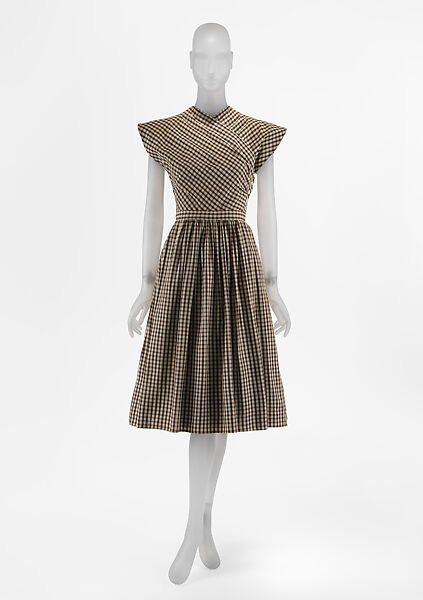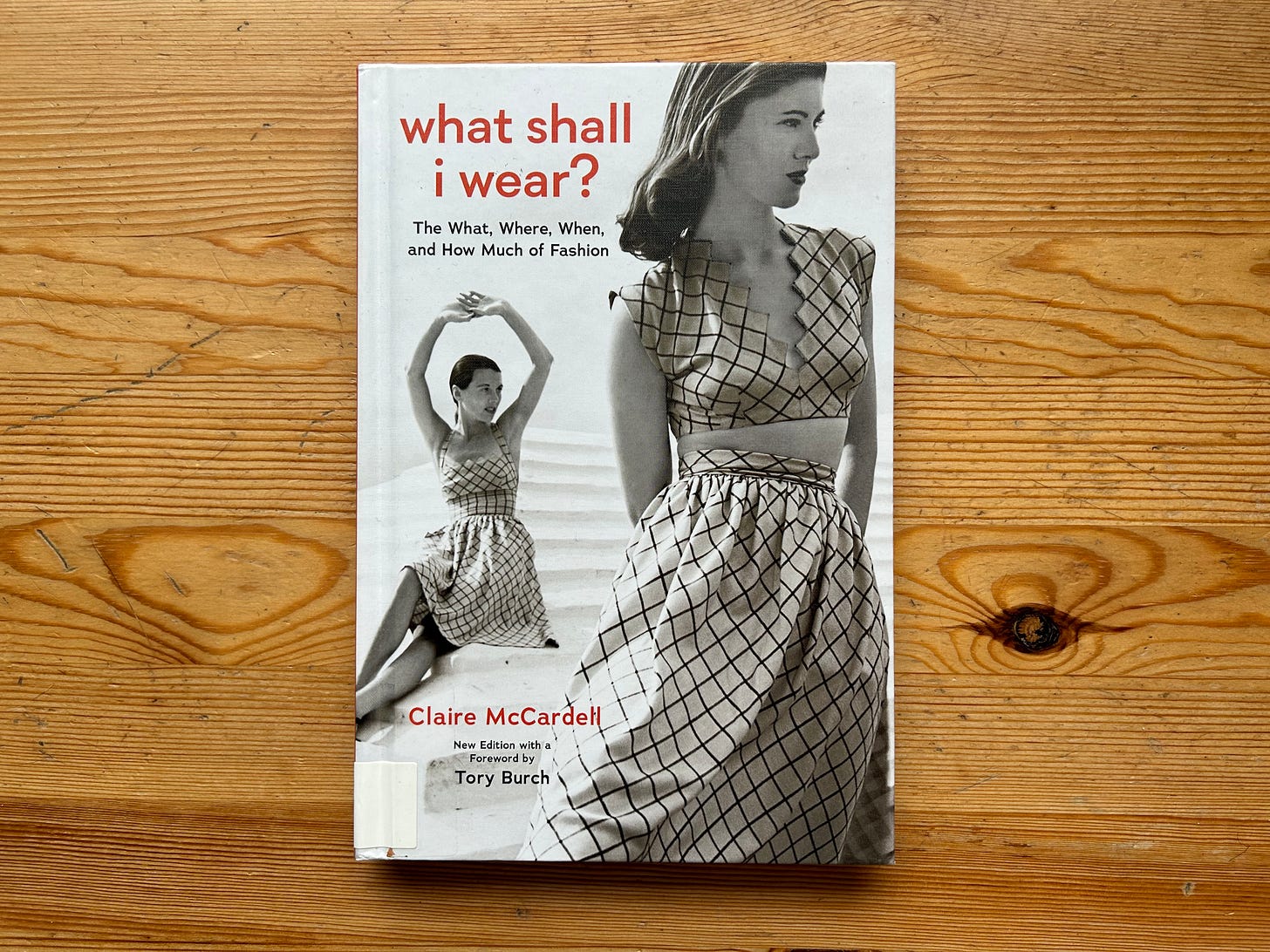Claire McCardell and the Power of Practical Dressing
What we can learn from a 1956 book of fashion advice.
The first time I saw a Claire McCardell dress, it was behind glass at New York’s Metropolitan Museum of Art. Snaking my way through the crowded Costume Institute exhibition In America: An Anthology of Fashion, I was giddy from glimpsing a patchwork skirt and schoolhouse sweater belonging to Ralph Lauren’s legendary 1982 folk art collection, when I came upon a dress that brought me to a standstill. It was made from sturdy brown gingham cotton, with a high neckline, fitted wrap bodice, and swishy tea-length skirt. While everything I had seen so far was beautiful, here was a dress I could see myself wearing every single day.
In an instant, everything changed. It was like glimpsing God. I had never seen the perfect dress before; then suddenly I had. It was the type of garment I imagined a 1940s woman might spot in a department store, then go out to buy her own fabric and sew a copy of at home, then wear constantly until the fabric becomes threadbare. I glanced at the title card and absorbed the name: Claire McCardell. She had designed the dress in 1943.
Before that moment, I was cursorily familiar with Claire McCardell as the post-war era American fashion designer who quote-unquote “invented Sportswear”1—a term that maintains little resonance today— but I didn’t quite grasp the extent to which her clothing influenced the way most women dress today. Like some midcentury Phoebe Philo, she designed clothing that women wanted to wear. It doesn’t seem like such a radical prospect today, but I imagine it would have been if most of the clothing on offer was stuffy Chanel suits and Poiret hobble skirts. When I learned that McCardell has written a book of fashion advice, What Shall I Wear? The What, Where, When, and How Much of Fashion that had been republished in 2022, I had to get my hands on it.
I found the book to be a charming, antiquated look at what it means to get dressed. McCardell has all sorts of opinions on fashion which remain prescient today and can be easily applied by those looking to, in modern day parlance, find their personal style. The overarching wisdom is that fashion is a practice; basically asking yourself a series of the same questions over and over again until the answers come quickly and confidently.
Here are some of the best tidbits of practical wisdom I gleaned from the book.
Keep reading with a 7-day free trial
Subscribe to Freak Palace to keep reading this post and get 7 days of free access to the full post archives.






